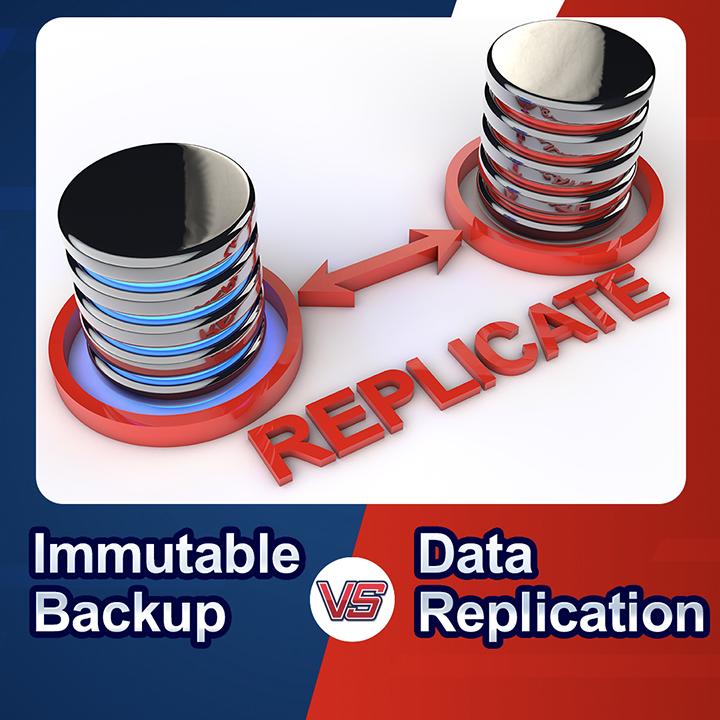When it comes to data protection and disaster recovery, there are various methods that organizations can employ. Two common approaches are immutable backup and data replication. While both serve the purpose of preserving data in case of failure, they are fundamentally different in their mechanisms and objectives. In this blog post, we will explore the differences between immutable backup and data replication and highlight their unique benefits.
Immutable Backup
Immutable backup refers to creating and storing copies of data to prevent them from being altered or deleted during a specified retention period. The primary goal of immutable backup is to create a secure and tamper-proof copy of data that can be relied upon for recovery. This is achieved by applying write-once-read-many (WORM) technology, which ensures that once data is written to the backup storage, it cannot be modified or deleted until the retention period expires. Immutable backup protects against accidental or malicious deletion, data corruption, and ransomware attacks, making it an essential component of a robust data protection strategy.
Data Replication
Data replication on the other hand, involves creating and maintaining identical copies of data across multiple storage systems or locations. The primary objective of data replication is to ensure high availability and continuous access to data in case of a localized failure or disaster. Organizations can minimize downtime and ensure business continuity by replicating data in real-time or near-real-time. Data replication can be synchronous, where changes are immediately copied to the replica, or asynchronous, where there may be a slight delay in the replication process. This delay allows for better performance and can protect against data corruption or accidental deletions that may occur on the primary system.
Key Differences
The main difference between immutable backup and data replication lies in their objectives and mechanisms. Immutable backup focuses on creating secure and unalterable copies of data, primarily for data protection and compliance purposes. It safeguards against data loss, corruption, and unauthorized access. Data replication, on the other hand, emphasizes continuous availability and redundancy. Keeping multiple copies of data in different locations ensures that data can be accessed even in the event of a localized failure or disaster.
Another significant difference is the time frame in which each method operates. Immutable backup typically retains data for a specified period, during which data cannot be modified or deleted. This ensures that a clean and reliable copy of data is available for recovery purposes. Data replication, on the other hand, operates in real-time or near-real-time, continuously updating the copies of data. This allows for both high availability and the ability to recover from recent data loss or corruption.
While immutable backup and data replication are essential components of a comprehensive data protection strategy, they serve different purposes and operate in distinct ways. Immutable backup focuses on creating secure and unalterable copies of data for recovery and compliance purposes, while data replication ensures high availability and continuous access to data. By understanding the differences between these two approaches, organizations can tailor their data protection strategies to meet their specific needs and ensure the integrity and availability of their critical data. CloudBacko backup by your side.Talk to us about your data protection strategy.
